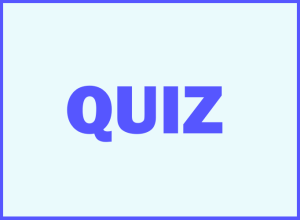In the previous post, we talked about the optical activity and the observed rotation. Remember, the observed rotation is the degree and direction to which the plane of a polarized light rotates when passing through a sample of a chiral compound.

The rotation occurs because of the interaction between the polarized light and the chiral media it passes through. So, one thing that evidently should affect the extent of this rotation is the pathlength of the chiral sample. The longer the pathlength, the greater the rotation since it increases the amount of chiral sample that the light interacts with. In fact, doubling the length of the sample tube doubles the observed rotation.
The other way of enhancing this interaction is the direct change of the concentration of the chiral compound. As expected, the higher the concentration, the greater the rotation. And this as well, when doubled, the observed rotation is twice as greater.
Aside from the concentration and the pathlength, the temperature and type of the light can also affect the observed rotation.
Therefore, these two parameters need to be taken into consideration whenever the optical rotation is measured otherwise the same compound will give inconsistent results.
To make the data for observed rotation more universal, the quantity specific rotation ([α]) was introduced. The specific rotation of a sample is measured in a 1 dm sample tube at 25 °C using a sodium lamp which emits light at a fixed wavelength of 589 nm. This is called the D line of sodium. The concentration of the chiral solute is kept at 1 g/mL.

The specific rotation is a characteristic of a compound and much like its melting point or boiling point, it is a physical property that can be found in reference books.
An example of reporting the specific rotation of a compound is shown below:

This indicates that the experiment was run at 25 °C using D line of a sodium lamp (λ = 589.6 nm), and that a sample containing 1.00 g mL−1 of the optically active substance, in a 1 dm tube which resulted in a rotation of 15.42° in a clockwise direction.
Just like the observed rotation, the direction here is as important as the degree. Remember that enantiomers rotate the plane of polarized light to the same extent but opposite direction. For example, the specific rotation of (R)-2-butanol and (S)-2-butanol are -13.52 o and +13.52o respectively.

Remember, if the rotation is clockwise, the compound is called dextrorotatory and is labeled with d or (+). And, if the plane of the light rotates counterclockwise, we have a levorotatory compound, and the rotation is labeled l or (–).
Be sure to remember that there is NO relationship between the R and S configuration and the d (+) and l (–) notations. The R and S notation is used for labeling the absolute configuration of chirality centers while the d (+) and l (–) notations indicate the direction to which the sample rotate the plane of a polarize light.
For example, the S enantiomers of glyceraldehyde and lactic acid are levorotatory (–) and dextrorotatory (+) respectively.

Check out this 108-question, Multiple-Choice Quiz with a 3-hour Video Solution covering the most important concepts you need to know in Stereochemistry:
Stereochemistry Practice Problems Quiz
Check Also
- How to Determine the R and S Configuration
- The R and S Configuration Practice Problems
- What is Nonsuperimposable in Organic Chemistry
- Chirality and Enantiomers
- Diastereomers-Introduction and Practice Problems
- Enantiomers vs Diastereomers
- Cis and Trans Stereoisomerism in Alkenes
- E and Z Alkene Configuration with Practice Problems
- Enantiomers vs Diastereomers
- Enantiomers, Diastereomers, the Same or Constitutional Isomers with Practice Problems
- Configurational Isomers
- Optical Activity
- Racemic Mixtures
- Enantiomeric Excess (ee): Percentage of Enantiomers from Specific Rotation with Practice Problems
- Symmetry and Chirality. Meso Compounds
- Fischer Projections with Practice Problems
- R and S Configuration in the Fischer Projection
- R and S configuration on Newman projections
- R and S Configuration of Allenes
- Converting Bond-Line, Newman Projection, and Fischer Projections
- Resolution of Enantiomers: Separate Enantiomers by Converting to Diastereomers
- Stereochemistry Practice Problems
- Stereochemistry Practice Quiz

